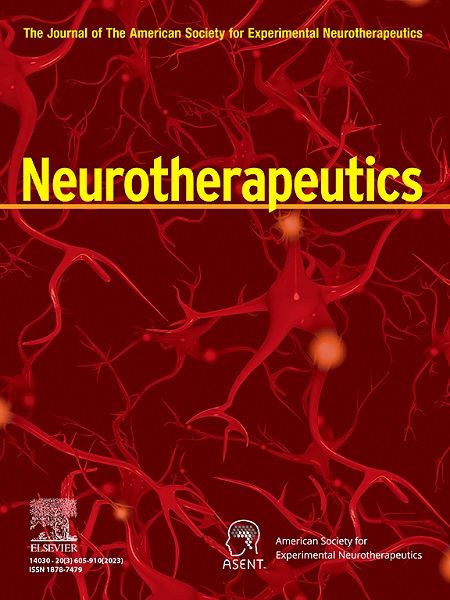Integrating perfusion imaging derived venous outflow and tissue-level collateral parameters in a comprehensive clinical model enhances prognostication in large vessel occlusion stroke
IF 6.9
2区 医学
Q1 CLINICAL NEUROLOGY
引用次数: 0
Abstract
Arterial inflow restoration and collateral status have been significantly correlated with functional outcomes in AIS-LVO patients undergoing mechanical thrombectomy (MT). CT perfusion imaging biomarkers, including prolonged venous transit (PVT), cerebral blood volume (CBV) index, and hypoperfusion intensity ratio (HIR), have emerged as reliable pretreatment adjunct parameters of comprehensive flow assessment. However, their absolute and comparative effectiveness in improving prognostic prediction remains unclear when used in conjunction with clinical and arterial inflow parameters. In our prospectively maintained database, we retrospectively reviewed and analyzed 149 patients with anterior circulation AIS-LVO who underwent MT. PVT was defined as Tmax ≥10 s timing within the superior sagittal sinus, torcula, or both, where PVT-was considered favorable. CBV index and HIR were derived from automated CTP software and analyzed in both continuous and dichotomized forms (HIR <0.4 and CBV index ≥0.8 represented favorable collaterals). A baseline logistic regression model incorporating significant clinical parameters and arterial inflow information was built first. PVT, CBV index, and HIR were subsequently incorporated individually and then in combination. Model performance was assessed using receiver operating characteristic analysis and compared by Delong's tests.PVT+ was associated with a significantly higher likelihood of unfavorable 90-day modified Rankin Scale outcomes (47.9 % vs. 16.7 %, p < 0.01). Incorporating PVT into a baseline model comprised of significant clinical and arterial inflow parameters (age, hypertension, NIHSS, and mTICI score) improved outcome prediction (AUC: 0.821 [95%CI 0.749–0.879]), outperforming models incorporating CBV index (AUC: 0.792 [95%CI 0.718–0.854] and 0.799 [95%CI 0.725–0.860] in continuous and dichotomized forms, respectively) or HIR (AUC: 0.789 [95%CI 0.715–0.852] and 0.789 [95%CI 0.714–0.851] in continuous and dichotomized forms, respectively). The highest predictive accuracy was achieved by combining PVT with dichotomized CBV index, significantly outperforming the baseline model (AUC: 0.831 [95%CI 0.761–0.887] vs. 0.780 [95%CI 0.705–0.843], p = 0.04).The combination of PVT and CBV index in conjunction with well-established clinical and interventional parameters significantly enhances predictive accuracy. This comprehensive imaging and clinical model offers potential utility for outcome stratification and clinical decision-making. Furthermore, PVT is a stronger predictor of functional outcomes in AIS-LVO patients than CBV index or HIR, highlighting the importance of VO assessment in stroke prognosis. However, prospective studies are necessary for further evaluation of the strength of these findings.
在综合临床模型中整合灌注成像衍生的静脉流出和组织水平侧支参数可提高大血管闭塞性卒中的预后。
动脉流入恢复和侧支状态与AIS-LVO患者机械取栓(MT)的功能结局显著相关。CT灌注成像生物标志物,包括延长静脉输送(PVT)、脑血容量(CBV)指数和低灌注强度比(HIR),已成为综合血流评估的可靠预处理辅助参数。然而,当与临床和动脉流入参数联合使用时,它们在改善预后预测方面的绝对有效性和相对有效性尚不清楚。在我们前瞻性维护的数据库中,我们回顾性地回顾和分析了149例接受MT的前循环AIS-LVO患者。PVT被定义为Tmax≥10 s的时间在上矢状窦、环形静脉或两者内,PVT被认为是有利的。CBV指数和HIR由自动化CTP软件导出,并以连续和二分形式(HIR)进行分析
本文章由计算机程序翻译,如有差异,请以英文原文为准。
求助全文
约1分钟内获得全文
求助全文
来源期刊

Neurotherapeutics
医学-神经科学
CiteScore
11.00
自引率
3.50%
发文量
154
审稿时长
6-12 weeks
期刊介绍:
Neurotherapeutics® is the journal of the American Society for Experimental Neurotherapeutics (ASENT). Each issue provides critical reviews of an important topic relating to the treatment of neurological disorders written by international authorities.
The Journal also publishes original research articles in translational neuroscience including descriptions of cutting edge therapies that cross disciplinary lines and represent important contributions to neurotherapeutics for medical practitioners and other researchers in the field.
Neurotherapeutics ® delivers a multidisciplinary perspective on the frontiers of translational neuroscience, provides perspectives on current research and practice, and covers social and ethical as well as scientific issues.
 求助内容:
求助内容: 应助结果提醒方式:
应助结果提醒方式:


